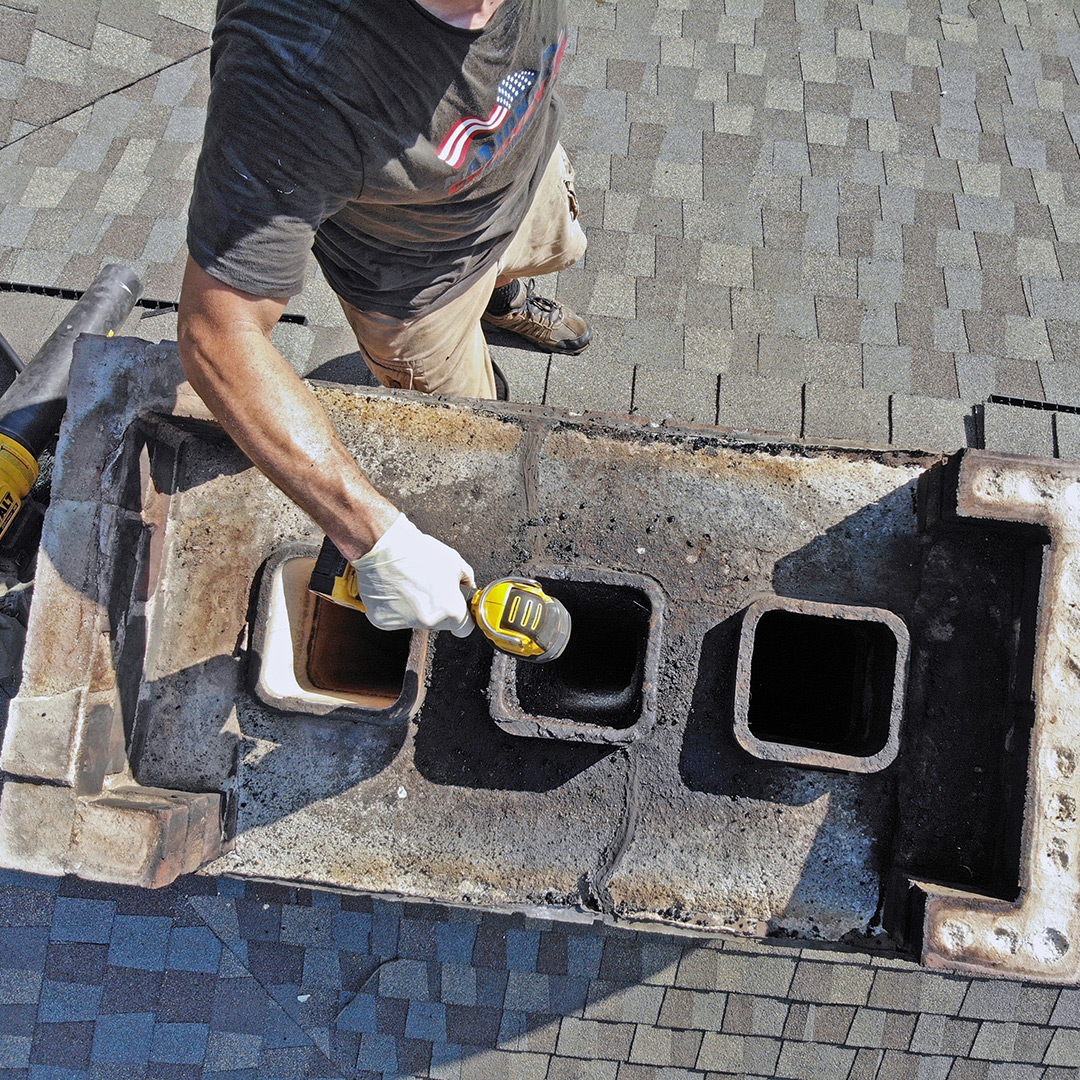What Do Chimney Inspections Cover?
If you have a fireplace and chimney, regular inspections are important to keep the system running safely and smoothly. Chimney inspections are recommended once a year, especially for chimneys that serve wood-burning appliances.
National Chimney Cleaners of Fairfield County, CT, and Morris County, NJ, would like to tell you a little about what chimney inspection involves and the benefits it will bring to your home and family.
 A basic chimney inspection
A basic chimney inspection
Officially referred to as a “Level 1 chimney inspection,” the basic inspection covers all readily accessible areas of your chimney system.
During a basic inspection, your technician will look at several things.
Creosote buildup in the flue
Creosote forms when smoke condenses in the flue. This substance is the cause of most chimney fires in Connecticut and New Jersey each year. Your inspector will evaluate the level of creosote inside your chimney flue and may recommend a proper chimney sweeping.
Obstructions in the flue
Creosote can build up to the point that drafting is hindered and you experience backups of smoke and deadly carbon monoxide. Leaves, twigs, the nests of small animals, and other debris can also cause a drafting obstruction. A chimney cap will keep debris out; chimney cleaning will remove existing debris and creosote.
Chimney masonry
Cracked bricks and crumbling mortar allow water to seep into the masonry, where it will freeze and expand and do considerable damage. A basic inspection assesses the condition of the bricks and mortar and recommends solutions if damage is found.
Chimney crown
The concrete chimney crown at the top of the chimney guards the chimney interior from rain and debris. Crowns are vulnerable to cracking, and when this happens, they need to be sealed, repaired or rebuilt to prevent system-wide water damage.
Chimney cap
A damaged or missing chimney cap opens a path for water to run down into the flue, where it can affect the chimney liner, fireplace damper, firebox and other parts of your chimney and fireplace system. Damaged caps can sometimes be repaired, but replacement is usually the solution of choice.
Advanced chimney inspections
There are two other types of chimney inspections that should be performed in certain circumstances.
Level 2 inspection
This inspection uses a video camera to view the chimney flue from top to bottom and detect a variety of problems with the chimney liner. When damaged, a chimney liner can leak deadly carbon monoxide into your home. It can also allow intense heat and flames to escape and start a house fire.
Level 2 inspections are scheduled when:
- A chimney fire or other event has occurred and damage is suspected
- The home is being sold
- The system is being altered, such as by adding a gas insert to an existing wood-burning fireplace.
Level 3 inspection
This inspection is reserved for when significant damage is known to exist in the chimney system. It often involves dismantling materials of the home adjacent to the chimney as well as parts of the chimney structure in order to understand the scope of the problem.

By scheduling annual basic inspections and keeping on top of repairs, it’s unlikely you’ll ever need a Level 3 inspection.
Schedule your chimney inspection today
If it’s been more than a year since your last chimney inspection, give us a call. National Chimney Cleaners brings more than 20 years’ experience to chimney inspections, repairs, sweeping and other important chimney services.
Speak with a qualified chimney technician at (800) 631-6177, or get in touch through our simple contact form.

 A basic chimney inspection
A basic chimney inspection